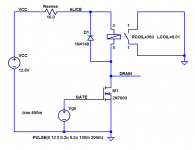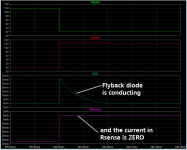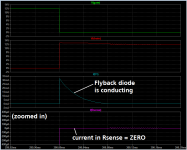Looks like I have some more reading to do 🙂.
I don't get it - Self on Audio is significantly cheaper as a paperback than as an ebook.
Probably sign of the times.......books/libraries are old redundant technology
A bit OTT for the thread, but a good read on the topic.
1993, PROCEEDINGS OF THE RELAY CONFERENCE- NATIONAL ASSOCIATION OF RELAY MANUFACTURERS
http://dalmura.com.au/projects/economizer_presentation.pdf
1993, PROCEEDINGS OF THE RELAY CONFERENCE- NATIONAL ASSOCIATION OF RELAY MANUFACTURERS
http://dalmura.com.au/projects/economizer_presentation.pdf
>> a driver that reduced coil current once contact was made
> Douglas Self, in 1999
Nearly all engine-starting relays ("solenoids") have a contact so the hold-in current is much less than the pull-in current. This goes back to the early 20th century. Bosch Automotive Electrics, 1967 Ford service manual.
Don't make me gimp and dig, but I think Relay Engineering, 1945 etc, Packard, Charles A., discusses dropping holding current as a routine thing, with comments on time effects. (This is a very scattered read, worth $10 but not $50.)
> Douglas Self, in 1999
Nearly all engine-starting relays ("solenoids") have a contact so the hold-in current is much less than the pull-in current. This goes back to the early 20th century. Bosch Automotive Electrics, 1967 Ford service manual.
Don't make me gimp and dig, but I think Relay Engineering, 1945 etc, Packard, Charles A., discusses dropping holding current as a routine thing, with comments on time effects. (This is a very scattered read, worth $10 but not $50.)
Here are three different ways to swallow the flyback pulse when turning off a relay's coil current. They trade peak overshoot voltage against turn-off time; this is no surprise since the inductor equationcan be rearranged to isolate the turn-off time "delta_T" on the left hand side
- V = L * delta_I / delta_T
- delta_T = L * delta_I / V
And going back to the illustration I have shown -- the impedance of the regulated power supply is well demonstrated. Or to quote W.C. Fields in "The Bank Dick"...just dont go there.
... the impedance of the regulated power supply is well demonstrated ...
Indeed the power supply does not participate in the flyback ("snubbing") event. It's a local current loop containing ONLY the relay coil's inductance, the relay coil's resitance, and the flyback diode network.
Example below.
Resistor "Rsense" has been installed to make it easy to observe the power supply current. Notice that when the MOSFET gate falls turning the MOSFET OFF, current flows in the flyback diode but no current flows in Rsense. The power supply does not participate in the flyback event.
_
Attachments
Doesn't LTSpice have a current probe?Resistor "Rsense" has been installed to make it easy to observe the power supply current.
_
- Status
- Not open for further replies.


